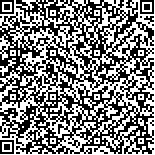|
| 引用本文: | 郑黎明,贾 科,毕天姝,侯来运,方 煜.海上风电接入柔直系统交流侧故障特征及对保护的影响分析[J].电力系统保护与控制,2021,49(20):20-32.[点击复制] |
| ZHENG Liming,JIA Ke,BI Tianshu,HOU Laiyun,FANG Yu.AC-side fault analysis of a VSC-HVDC transmission system connected to offshore wind farms and the impact on protection[J].Power System Protection and Control,2021,49(20):20-32[点击复制] |
|
| |
|
|
| 本文已被:浏览 5843次 下载 1672次 |

码上扫一扫! |
| 海上风电接入柔直系统交流侧故障特征及对保护的影响分析 |
| 郑黎明,贾科,毕天姝,侯来运,方煜 |
|
|
| (1.新能源电力系统国家重点实验室(华北电力大学),北京102206;2.国家电网南京供电公司,江苏 南京 210019) |
|
| 摘要: |
| 柔性直流输电是解决大规模海上风电远距离外送问题的首选方案。然而,柔直送端交流系统发生故障时,线路两侧短路电流均由电力电子换流器提供,系统的故障特征发生了根本性变化,直接导致传统保护性能的下降、甚至不正确动作,影响系统的安全运行。因此,针对永磁风电场经柔直外送的拓扑,分析了柔直送端交流侧故障的特征,并结合交流侧故障穿越控制目标提出了换流器短路电流解析表达方法。理论分析表明,当风电场弱出力时,仅由柔直换流器提供短路电流,且短路电流呈现出幅值受限特性、甚至低于额定电流;当风电场正常出力时,柔直换流器与风电场均提供短路电流,且二者控制目标不同,两侧同相别短路电流必然存在相角差。基于故障特征的研究,对现场常用的保护原理进行了性能分析,获知了线路距离保护、差动保护均会存在性能下降的问题。在PSCAD/EMTDC中建立了风电柔直送出系统的精细化模型,验证了理论分析的正确性,为现场保护配置以及保护新原理的研究提供了理论基础。 |
| 关键词: 风电场 柔性直流 交流故障 故障特征分析 |
| DOI:DOI: 10.19783/j.cnki.pspc.201591 |
| 投稿时间:2020-12-22修订日期:2021-03-23 |
| 基金项目:国家自然科学基金项目资助(51725702,51777071);华能集团总部科技项目“海上风电与智慧能源系统科技专项(一期)(HNKJ20-H88)”资助 |
|
| AC-side fault analysis of a VSC-HVDC transmission system connected to offshore wind farms and the impact on protection |
| ZHENG Liming,JIA Ke,BI Tianshu,HOU Laiyun,FANG Yu |
| (1. State Key Laboratory of Alternate Electrical Power System with Renewable Energy Sources (North China Electric
Power University), Beijing 102206, China; 2. State Grid Nanjing Power Supply Company, Nanjing 210019, China) |
| Abstract: |
| In order to deal with the problems of long-distance large-scale offshore wind power transmission, VSC-HVDC transmission system has been gradually applied to the integration of renewable energy power plants. In the case of an AC fault occurring at the sending end of the VSC-HVDC system, the short-circuit current on both sides of the AC line is provided by the power electronic converter. There is a fundamental change in the fault characteristics of the system. The change of fault characteristics will directly lead to the degradation of traditional protection performance, or even incorrect operation. The security of transmission system operation is thus challenged. Therefore, this paper studies the topology of the VSC-HVDC transmission system connected to the inverter-interfaced wind farms. To confirm the applicability of the linear analysis method, the characteristics of the AC side fault at the sending end are analyzed. Combined with different fault-ride-through control strategies, the analytical expression method of the converter short-circuit current is derived. Theoretical analysis shows that the short-circuit current is only provided by the flexible DC converter, and the short-circuit current has limited amplitude, even lower than the rated current. In the case of the normal output of wind farms, both the flexible DC converter and the wind farm provide short-circuit current, and their control objectives are different. Therefore, there must be a phase angle difference between the two sides of the same phase short-circuit current. Based on the study of fault characteristics, a performance analysis of common protection is carried out. It is known that the performance of line distance protection and differential protection will decline. The refined model of a VSC-HVDC transmission system connected to wind farms is established in PSCAD. The simulation results verify the correctness of the analysis. It provides a theoretical basis for protection configuration and novel protection research.
This work is supported by the National Natural Science Foundation of China (No. 51725702 and No. 51777071) and “Special Project on Offshore Wind Power and Smart Energy System Technology (Phase I)” of Science and Technology Project of the Headquarters of China Huaneng Group Co., Ltd. (No. HNKJ20-H88). |
| Key words: wind farm VSC-HVDC AC fault fault characteristics analysis |
|
|
|
|
|